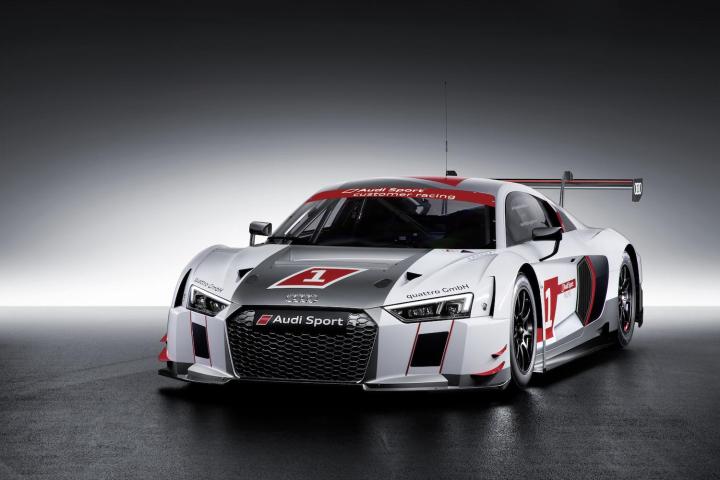
Audi’s first generation R8 LMS collected an impressive track record throughout its run. 26 GT3 Championship wins, seven victories in 24-hour races and 23 titles from various events is just a collection of achievements racked up by the R8 LMS during its service with different customer teams.

This next gen R8 race car is, as before, very closely based on the production road car, with e many of the parts carrying over. For instance, the 5.2-liter V10 power plant remains nearly unchanged, producing 585 horsepower and is connected to a newly designed six-speed transmission that’s lighter than the outgoing component.
The lightness in general is an overall bonus over the retiring R8 LMS. Its base weight may only be a seemingly insubstantial 55 pounds, but every ounce adds up, and any chunk you can shave off means the car can go that fraction of a second faster. A new mix of aluminum in the Audi space frame is a large contributor to the wait saving, as well as increasing torsional stiffness by 39 percent.

An increase of speed and capability is almost pointless without an increase of safety to go alongside with this, and Audi state that the R8 LMS will set new standards in that as well. A new modified front structure and a carbon-fiber reinforced polymer crash element on the rear help it surpass the safety regulations set for GT3 cars set for 2016.

The underfloor of the R8 LMS is now fully lined that ends with an integrated rear diffuser, resulting in the ability to reduce the dimensions of the rear wing without increasing drag. Wheel wells open up rearwards via a larger cross-section, which contributes to better airflow, which has improved cooling by 10 percent. Fresh air circulation into the cockpit has improved as well, with a flow rate of 250 liters per second when the car reaches a speed of 124 miles per hour. Fresh air means a comfortable driver, which means less mistakes and fatigue during endurance runs.
The R8 LMS is already scheduled to take place in 24-hour races at the Nurburgring as well as at Spa. Audi will start taking orders from customer teams in the second half of the year, with the goal of delivering the first models by year’s end.
Editors' Recommendations
- Audi’s tail-wagging rear-wheel-drive R8 will play an encore in 2020
- Audi TT will get the ax to make way for electric cars — and the R8 may be next


